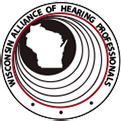Background noise is ubiquitous, and it can cause lasting damage to the hearing if it is very loud or persistent. Noise-induced hearing loss is common in some occupations, such as construction, the military, and air traffic control, but is also very common in bus and truck drivers, according to new research published in the journal Environmental Health and Preventative Medicine.
Table of Contents
Vehicles & Noise Pollution
Noise pollution is one of the most serious occupational and environmental hazards. The World Health Organization (WHO) estimates that noise pollution costs the economy $4 million per year. Vehicle noise is the most common source of noise that individuals experience on a daily basis. According to the Committee of Europe, car noise pollution is at 70–80 decibels (dB) while bus noise pollution is around 80–95 decibels (dB).
The power transfer system of the vehicle, which comprises air valves, engine noise, exhaust system, fan, air blower, filter, and finally move up to the top axis, is the biggest component in noise pollution in low-speed cars, same as the vehicle tires which are the primary source of noise at speeds of 30–50 km/h.
Also, one of the causes of noise creation in cars is aerodynamics. Noise is produced when airflow collides with various components of the body, such as mirrors and columns. When traveling at speeds more than 80 km/h, the aerodynamic component becomes quite essential.
Noise at high levels can have a variety of consequences on humans. It can cause hearing loss, sleep disturbances, hypertension, coronary artery disease, and gastrointestinal ulcers, among other things. But, one of the most serious consequences of loudness is hearing loss.
Hearing Loss
Hearing loss is caused by sensory-neural damage that develops over time as a result of prolonged exposure to noise. It is preventable but permanent. Noise-induced hearing loss is caused by the death of hair cells in the ears, as well as cochlear damage produced by metabolic changes in the body.
Hearing loss can create handicaps in people’s everyday activities and lifestyles, in addition to the immediate effects. It can potentially result in job loss and psychological consequences.
Health Risks of Noise Pollution Among Truck Drivers
Noise pollution may be harmful to our health in a variety of ways, whether we are aware of it or not.
- Hearing loss – Noise pollution, whether from listening to loud music in headphones or being exposed to loud drilling noises at work, heavy air or land traffic, or distinct occurrences in which noise levels approach harmful intervals, such as about 140 dB for adults and 120 dB for children, can cause hearing damage.
- Hypertension – A direct effect of noise pollution, which generated increased blood levels over an extended length of time.
- Sleep disturbances – Constant air or land traffic throughout the night causes sleep disruptions, which are dangerous conditions that can impact daily performance and lead to serious illnesses.
- Cardiovascular dysfunctions – Noise pollution can promote high blood pressure, especially at night, which can lead to a variety of cardiovascular illnesses.
- Noise discomfort and psychiatric disorders – Noise irritation is a well-known term describing an emotional reaction that may be felt right away.
- Child development – Children tend to be particularly vulnerable to noise pollution, and a variety of noise-pollution-related disorders and dysfunctions, ranging from hearing loss to psychological and physical impacts, are known to afflict children.
How Loud Is Too Loud?
While late-night automobile traffic is clearly one of the most prominent causes of noise pollution in American cities, its effects on a worldwide scale are mostly unknown.
The Italian researchers discovered that 28% of the available scientific literature on noise pollution concentrates on the impact of air travel, which is an unexpected concentration given that the negative impacts of airport noise are reasonably well-known and well-regulated across the world. Noise abatement measures are typically required by aviation authorities in most Western countries (including the United States), such as zoning that requires airports to be built far away from residential areas, regulation of flight times to protect residents’ sleep schedules, or equipping aircraft with noise-dampening technology.
Car & truck noises, on the other hand, have received very little attention and are much less regulated. Only 18% of the studies in the researcher’s sample focused on road traffic noise – the rest looked at wind turbines, train traffic, and other sources of urban noise.
EPA acknowledged in 1974 that constant noise in excess of 45 decibels could harm human health.
Study: Hearing Loss Among Truck Drivers
One in every four heavy-vehicle drivers had hearing loss, according to Iranian research published in the journal Environmental Health and Preventative Medicine.
The survey involved 65,533 male heavy-vehicle drivers in Isfahan, Iran, including truck and intercity bus drivers. The hearing abilities of these drivers were tested using pure-tone air and bone conduction audiometry. From February 2006 through March 2016, data was gathered.
They discovered that 26.8% of heavy-vehicle drivers suffer from hearing loss. The hearing loss affected 14.6 percent of people in both ears, 7.8 percent in the left ear exclusively, and 4.4 percent in the right ear only. The majority of drivers with hearing loss had a minor problem.
If you drive a large vehicle, it’s critical to safeguard your hearing health by scheduling frequent hearing exams and receiving treatment as needed.
Noisy Workplace? Hearing Loss Workers Compensation Benefits
The Workers Compensation Program was established in 1911 to encourage employers to make the workplace safer by requiring safety programs and the use of safety devices. Since 1911, there have been over 2.5 million workers’ compensation claims filed. Hearing loss workers’ compensation claims now rank #3 in the number of occupational diseases claims filed.
Hearing loss workers’ compensation benefits are largely undiscovered benefits covering hearing health care, which is often uninsured. Many health insurance policies and programs like Medicare do not cover hearing aid purchases but workers’ compensation can. It also pays for the disability of hearing loss just as it does for the loss of eyesight or other injuries.
Aging populations, advances in technology, and greater sensitivity to hearing loss are bringing more attention to financing hearing health care. For the most part, those who qualify for hearing loss workers’ compensation benefits are retired hearing-impaired workers who live on fixed incomes.
Always feel free to ask Johnson Law Offices about the process, the law, or an individual case. The legal, medical, and audio-metric questions that come into play in a hearing loss workers’ compensation claim can be complicated. The claims require attention to detail mixed with an ability to work well with hearing-impaired retirees and their families, especially spouses, and their hearing health care professionals.
Sources
Contact Us
If you, or anyone you know, worked in noise and suffers from hearing loss, please do not hesitate to contact us.
Contact Us


